Final Statement of Concept
“Amorphous Breathing is a kinetic wearable that inflates and deflates as the euphonium player plays the music. The cape-like garment is a weaving of two inflated tubes that are driven by four fans. With the constant change in the speed of the fans, the wearable creates a breathing motion, having a life of its own and slowly engulfing the player.“
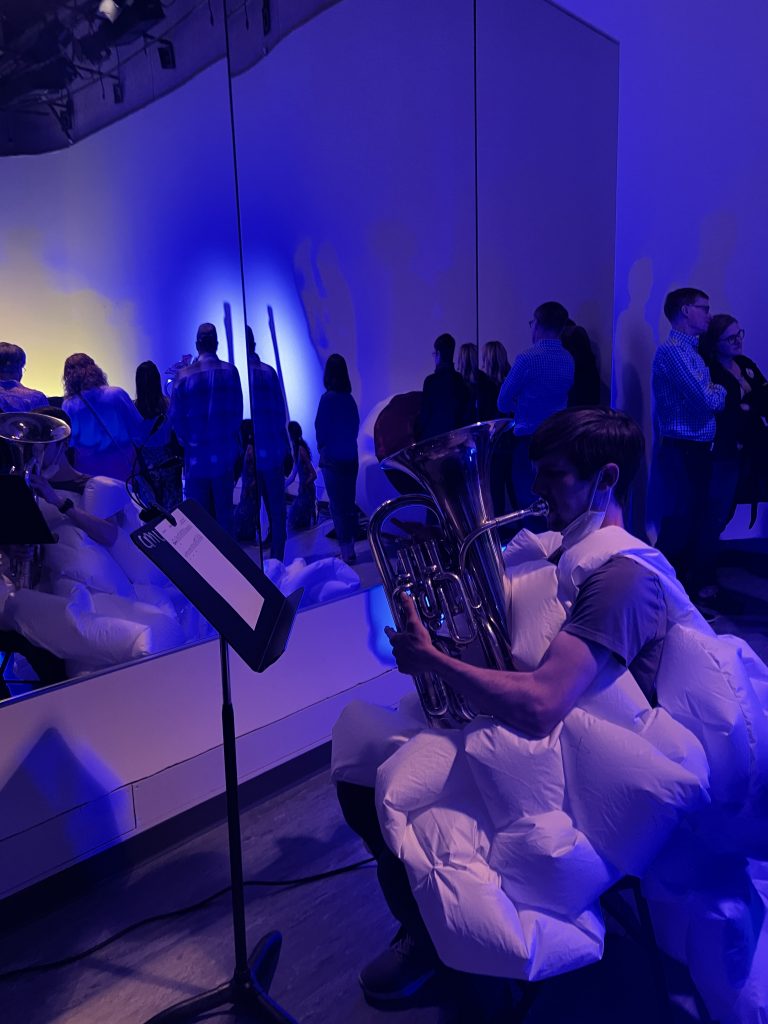
Process
We experimented with different ways to weave the form in a consistent manner. Prototyping with three tubes, we aimed to make a mountaining effect by braiding the tubes.
With the process of tailoring the piece with our musician Kyle, we decided to weave a wearable with two tubes. The iterations went through different forms of exploration with the consisting language of weaving.



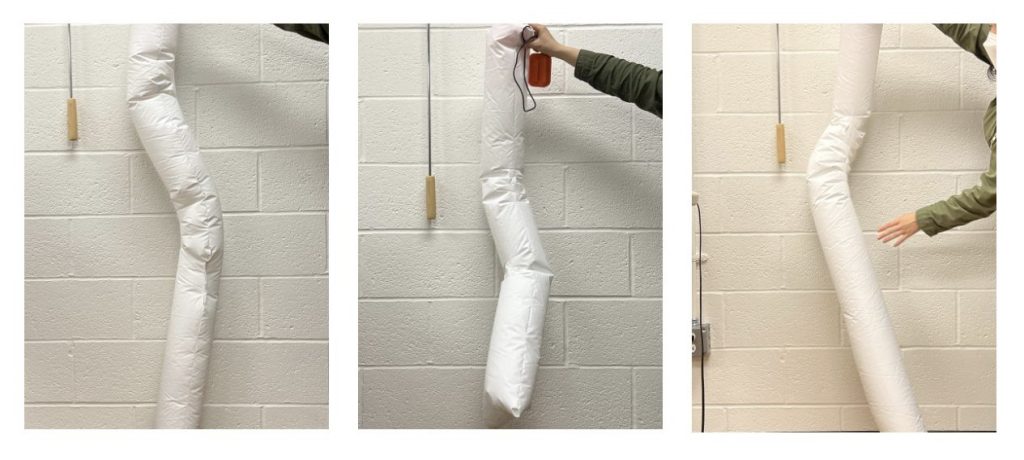

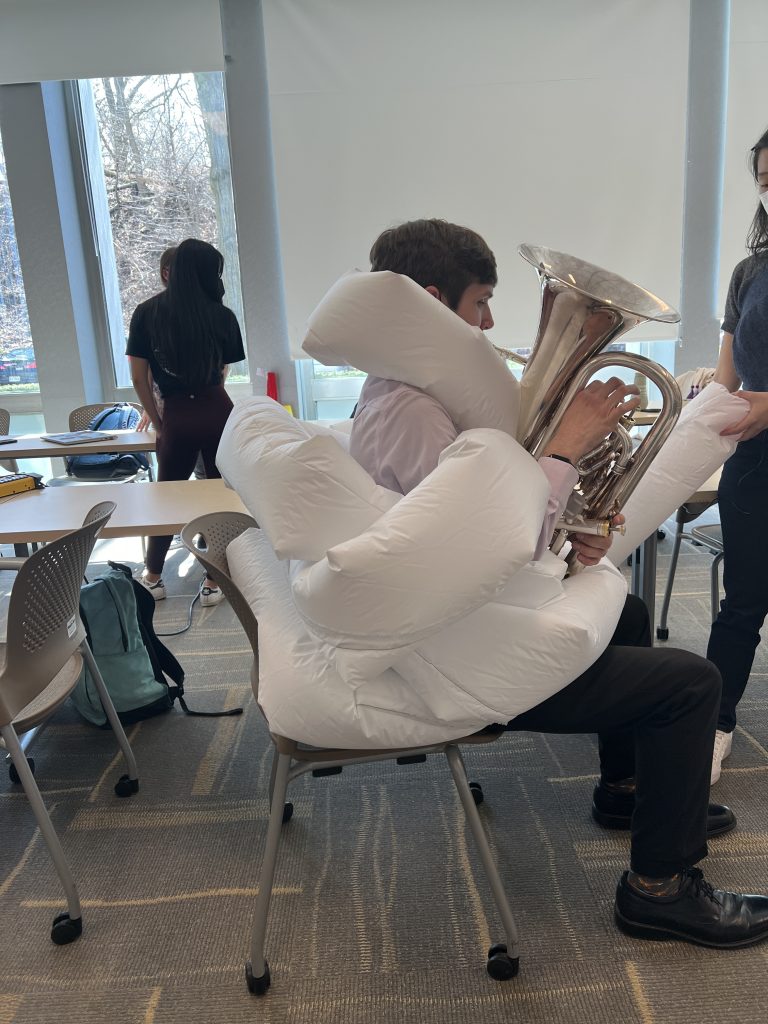

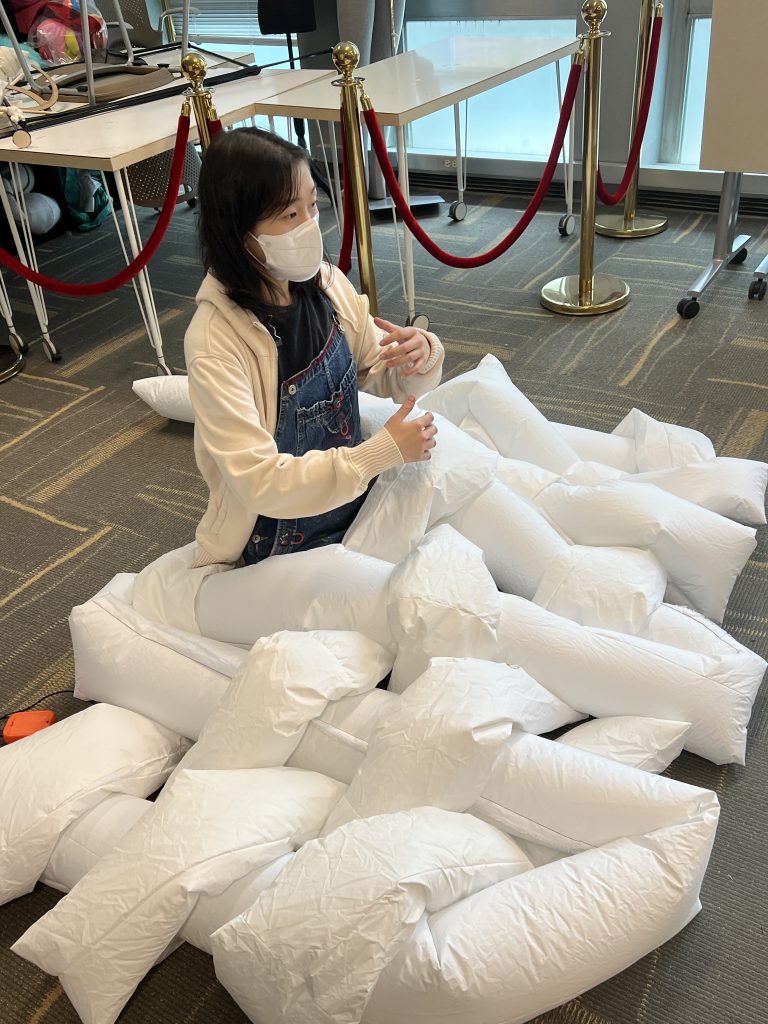


To resolve the limited airflow caused by fabric overlapping, we tested out ways to alter the tubes’ curving angle by adding darts. We put darts at each overlapping point and turning point. We further hand-stitched rows of weaving tubes to hold them together.
We initially attached two fans to the two tubes but we ended up doubling the number of fans to ensure a more effective way of inflating. Choreographing the movement of the piece, we adapted Adafruit to write a 4-minute program with varieties of breathing patterns.
After stitching all the parts together, we incorporated lighting to work with the semi-transparent fabric. The lighting creates a speckle of blue on the piece, emphasizing the pneumatic rise and fall of tubes.



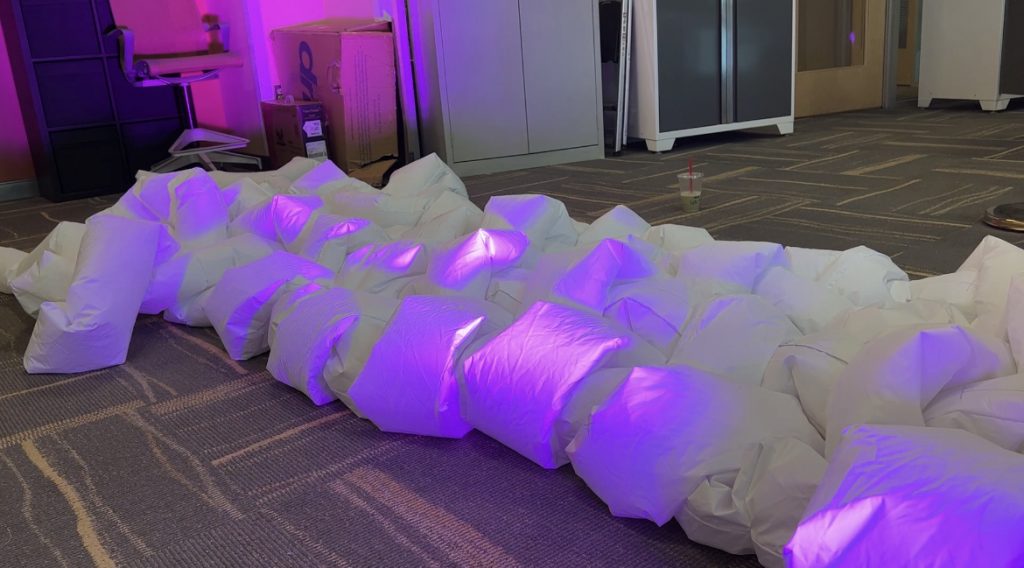

Successes
We are really happy with our approach to using a textile construction technique with an unconventional material as we are both interested in garment-making processes. We enjoyed collaborating with each other and incorporating our interests and love for textile into our project. The translation of materials while keeping the unique woven form was unique and successful.
Seeing it in the venue with all the other inflatables, animations, and people around was also such a gratifying experience, too. We were successful at creating a harmonious performance with the movement, the lighting, and the music. While the movement was subtle, the smooth undulating form that rises and falls with the music really helped building up the eerie ambiance that we planned.
Failures/What we would do differently
During our process, we struggled a lot with the form, going back and forth between braiding and weaving. When we finally decided to go with the weaving, our main problem was solving the air to flow constantly without the tubes restricting each other. Our solution was to make darts in every intersection, this was not the most precise way. We still faced trouble when Kyle wore our wearable as his shoulders and the instrument was creating pressure on the tubes. This made the movement even more subtle. If we could do this project again, we would use Rhino to craft the curved forms first, which could solve both the form problem and the airflow problem.
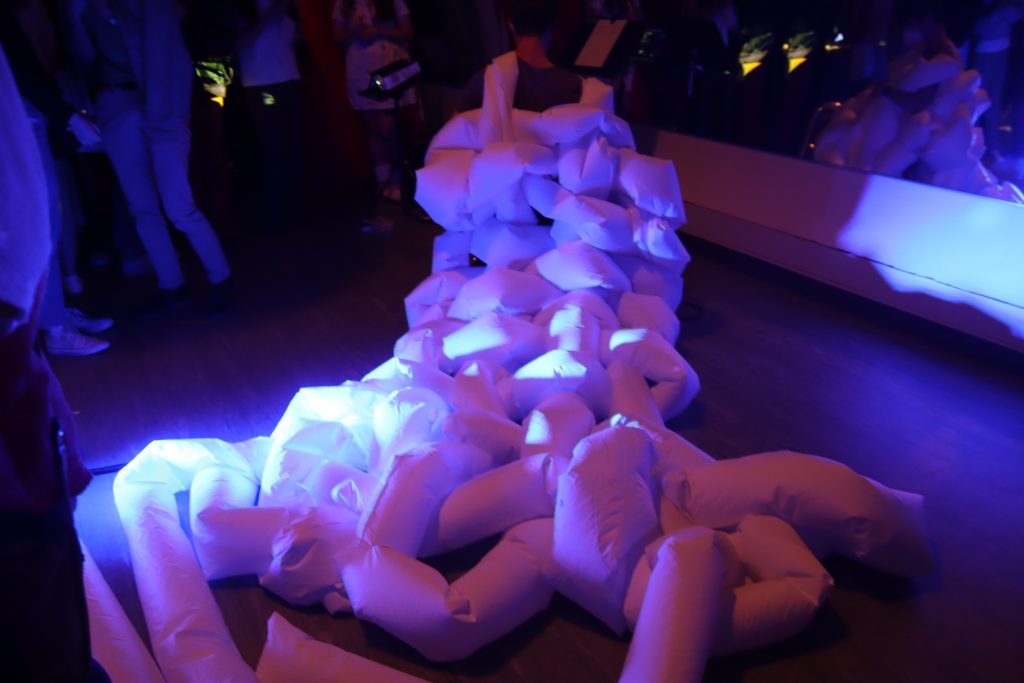
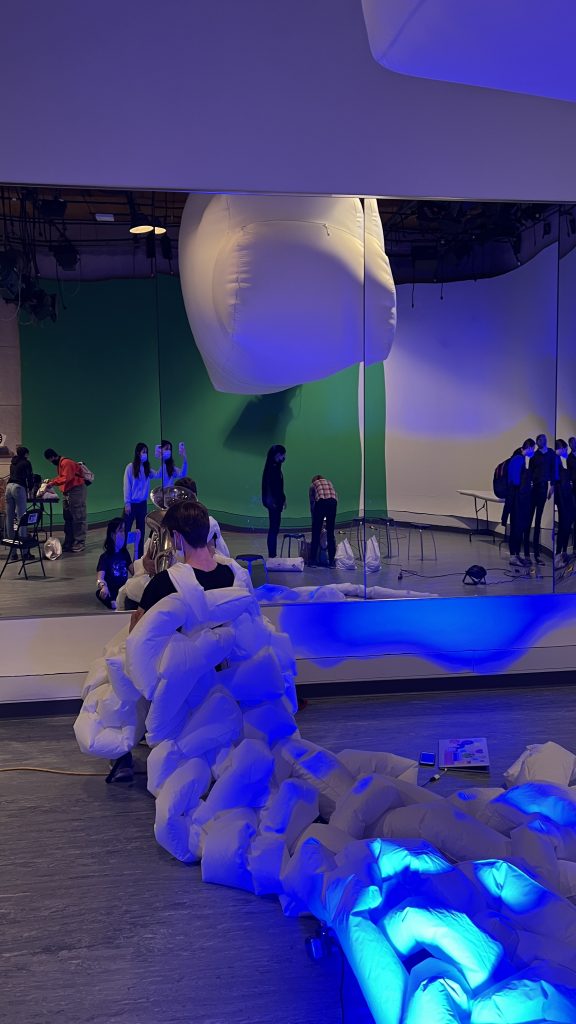
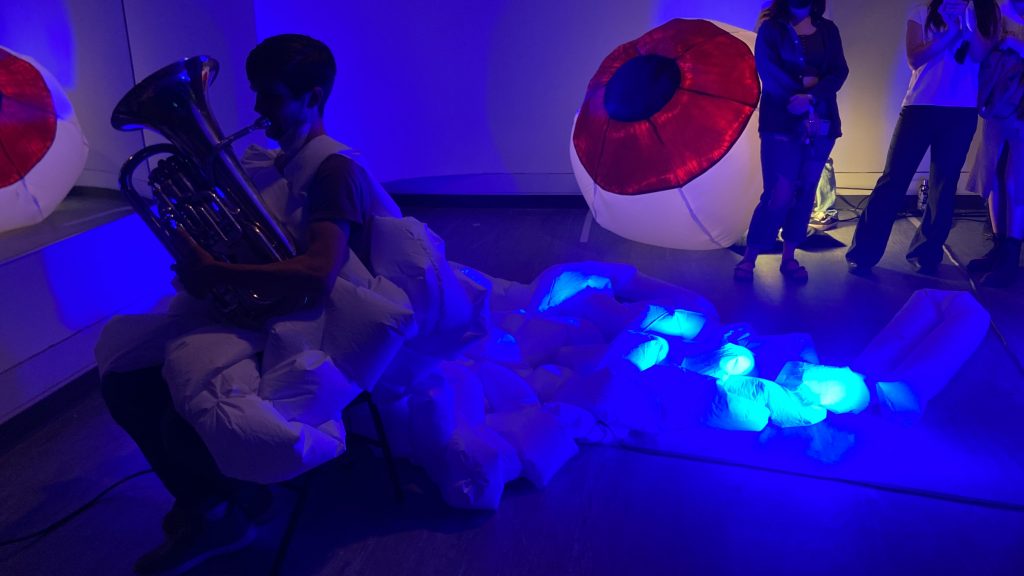
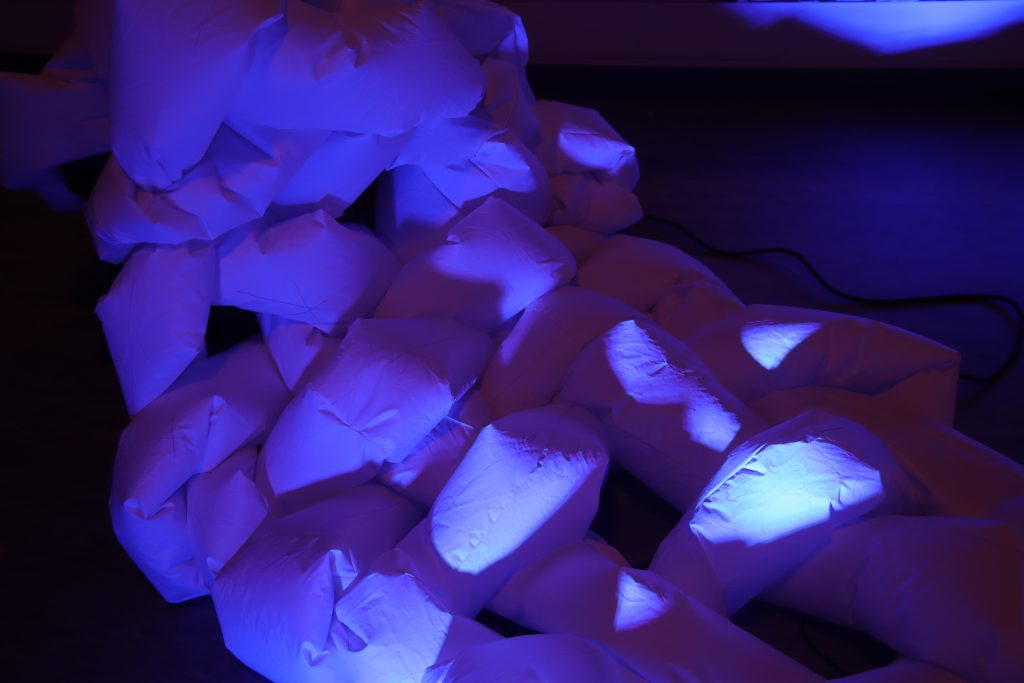
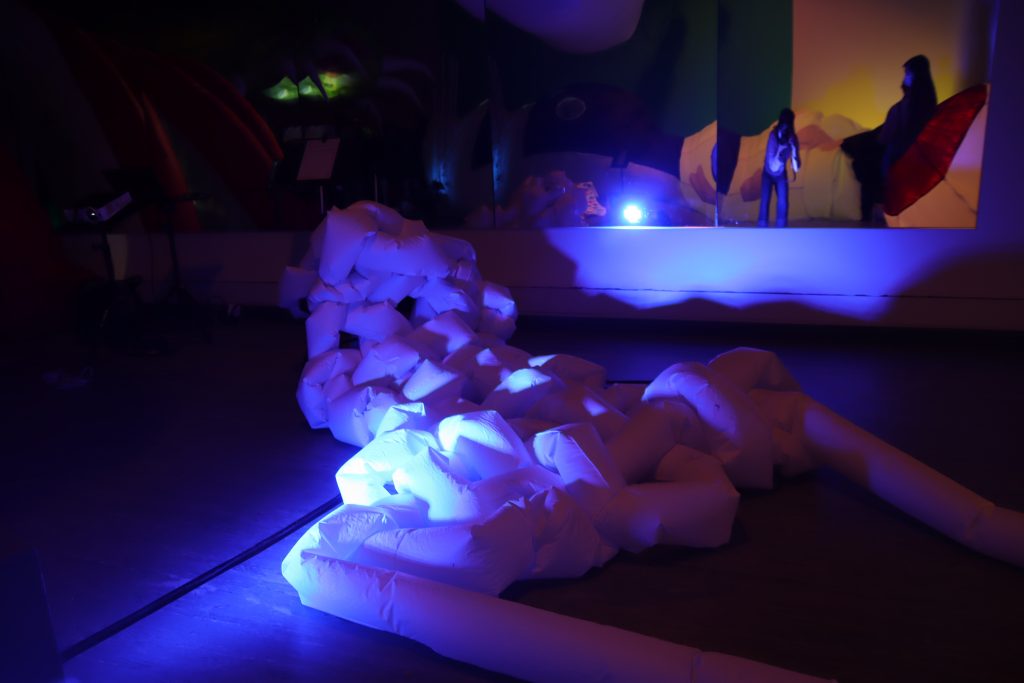
Citations of Related Work
Edra “Boa” Sofa by Campana Brothers (2002)
The Art of Dreams: Remember Your Dreams by Cyril Lancelin at The Promontory (2022)
Pnit by Pneuhaus (2019)
Leave a Reply
You must be logged in to post a comment.